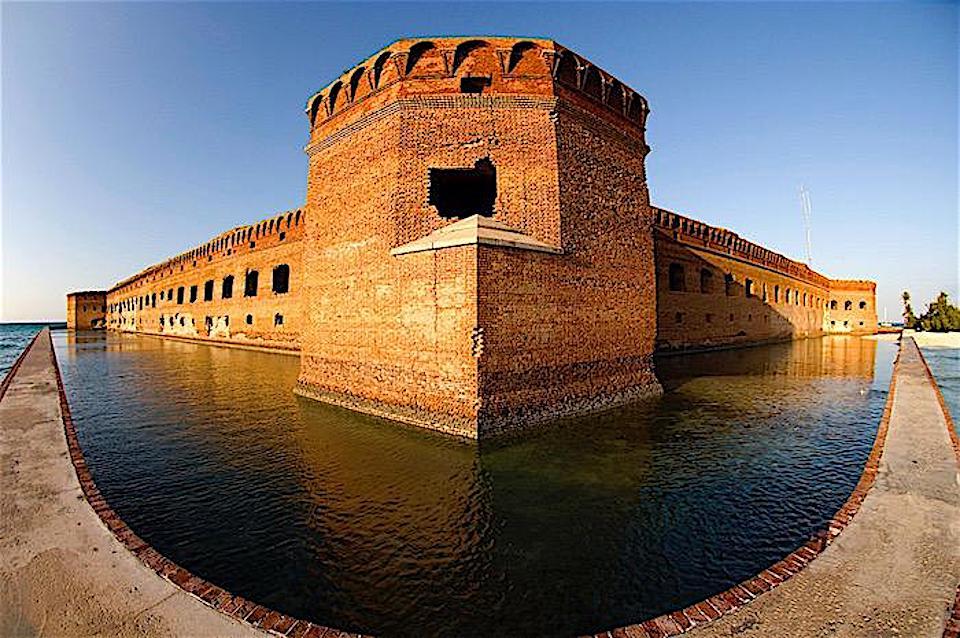
Despite tackling nearly $700 million in deferred maintenance needs, the overall price tag for deferred maintenance in the National Park System inched up to $11.9 billion during Fiscal 2018/NPS
Proof of the challenge the National Park Service faces in trying to catch up with deferred maintenance across the National Park System can be found in the agency's latest report on the matter: Nearly $700 million was spent during Fiscal 2018 on maintenance projects, yet the backlog still is nearly $12 billion.
Congress had a chance last year to give the Park Service a big lift by passing legislation that would have provided $6.5 billion over five years specifically for maintenance needs. But the measure died near the end of the 115th Congress as the politicians found themselves at budgetary loggerheads with President Trump. The legislation has been introduced again to the 116th Congress, but has yet to move.
"It’s great to see the National Park Service making progress on some key repair projects. At the same time, the agency’s maintenance backlog continues to grow because the number and cost of repairs compounds each year," pointed out Marcia Argust, who manages The Pew Charitable Trusts' Restore America's Parks initiative. "That’s why Congress needs to enact the Restore Our Parks legislation, a bipartisan proposal that would direct consistent funding to priority repairs. The last time the Park Service received a significant investment for maintenance needs was over 50 years ago; it’s time to invest in our national parks again."
How bad are things? Even though the Park Service spent more than $671 million in repair work during Fiscal 2018, the backlog still grew, from $11.6 billion at the end of FY17 to $11.9 billion a year later, an increase of 2.7 percent. Aging facilities, increased visitation, and resource constraints have kept the maintenance backlog between $11 billion and $12 billion since 2010, the Park Service noted.
“Improvements to visitor facilities, campgrounds, trails, and backbone infrastructure are essential to providing a world-class experience to our more than 300 million annual visitors and a safe work environment for our employees, volunteers, and partners,” National Park Service Deputy Director Dan Smith said. “Addressing the deferred maintenance in our national parks is critical to our core mission and remains a top priority.”
A Park Service release pointed out that among the $671 million of backlogged maintenance projects completed last year were a new roof over the visitor center at Gateway Arch National Park, a 26-mile pavement preservation project in Yosemite National Park, the restoration of native grasses at Nez Perce National Historical Park, and new paved trail surfaces at Independence National Historical Park.
Among the deferred maintenance projects addressed during Fiscal 2018, which ended September 30, were:
* $213 million in transportation projects retired on more than 1,000 transportation assets, such as paved and unpaved roads, parking areas, bridges, and tunnels.
* $201 million in buildings' needs retired across 272 park units.
* $92 million in utility systems, dams, constructed waterways, marinas, aviation systems, railroads, ships, monuments, fortifications, towers, and interpretive media and amphitheaters retired across 169 park units.
* $56 million in water and wastewater systems deferred maintenance retired across 108 park units.
* $52 million in trails deferred maintenance retired across 146 park units.
* $28 million in maintained landscapes maintenance retired across 176 park units.
* $18 million in housing projects retired across 136 park units.
* $11 million in campgrounds maintenance retired across 57 park units.
Among the parks with the largest outstanding maintenance backlog at the end of Fiscal 2018 were:
* Grand Canyon National Park, $313.9 million. Roughly a third of the total was attributed to the need to replace the Transcanyon Water Pipeline.
* Death Valley National Park, $128.9 million. Nearly $100 million of the total was tied to paved roads needs.
* Yosemite National Park, $645.6 million. Paved roads needs amounted to $371.3 million.
* National Mall and Memorial Parks, $654.9 million. Nearly $590 million in deferred maintenance was lumped into a category that, for the entire park system, involved utility systems, dams, constructed waterways, marinas, aviation systems, railroads, ships, monuments, fortifications, towers, interpretive media and amphitheaters.
* Natchez Trace Parkway, $368.9 million. Paved roads required $349.7 million in repairs.
* Blue Ridge Parkway, $508 million. Not surprisingly, the vast amount was tied to roads, which needed $464.3 milliono in repairs.
* Lake Mead National Recreation Area, $236.9 million. Paved road repairs totaled $198.6 million.
* Gateway National Recreation Area, $774.3 million. Needed repairs for paved roads totaled $443.4 million.
* Great Smoky Mountains National Park, $235.9 million. A bit more than $182 million was needed for paved road repairs.
* Yellowstone National Park, $585.5 million. Paved roads' needs tallied $369.4 million.
Of the $11.9 billion in deferred maintenance at the end of the last fiscal year, $2.8 billion was deemed "critical systems deferred maintenance." Much of that total, $757.8 million, was tied up in buildings maintenance, while water system needs amounted to $286.1 million. Trails had $237.9 million in critical needs.
You can find the needs of your favorite park(s) at this page.



Add comment